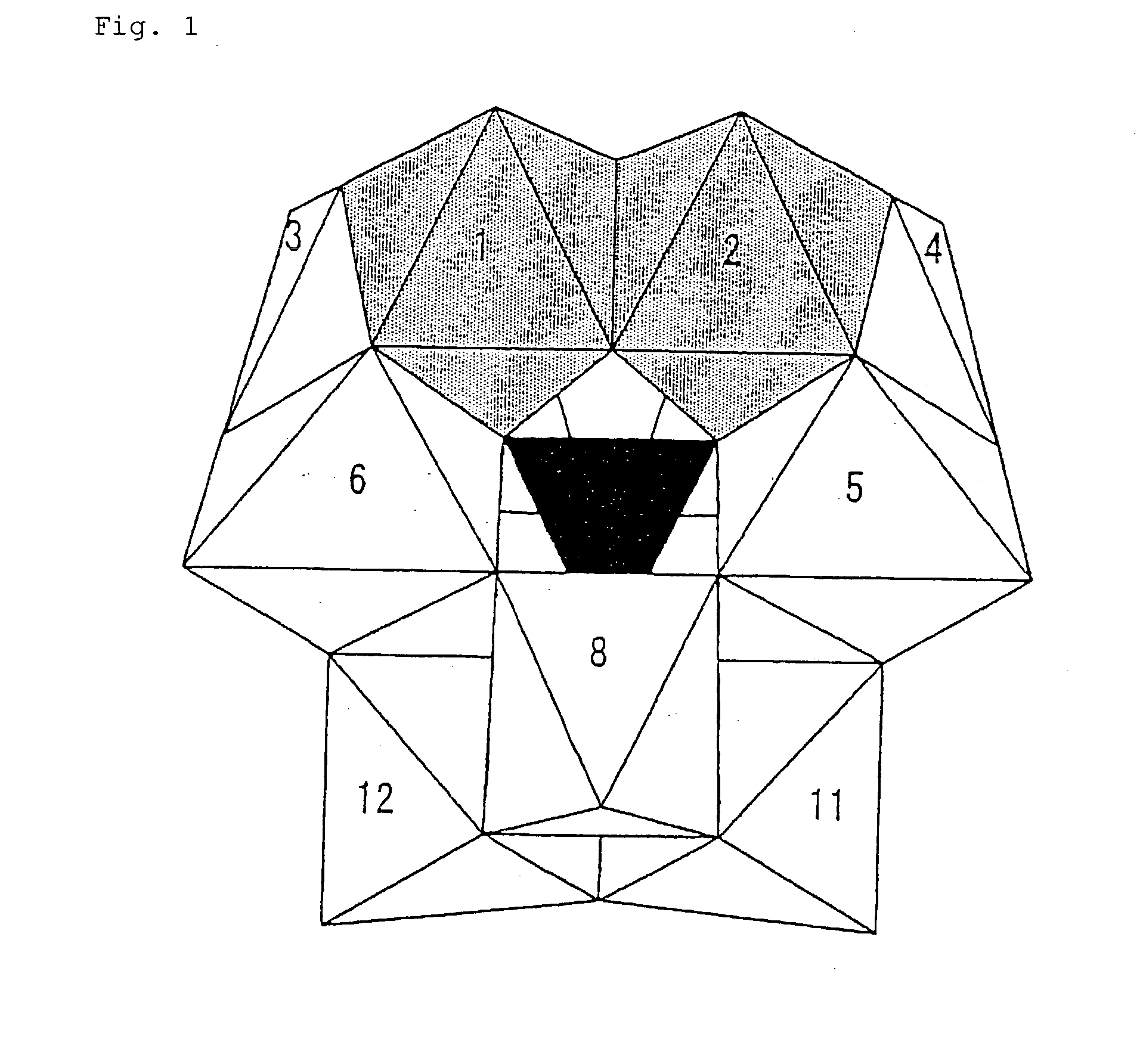Catalyst for producing epoxy compound and process for producing epoxy compounds with the same
a technology of epoxy compound and catalyst, which is applied in the direction of physical/chemical process catalyst, other chemical processes, separation processes, etc., can solve the problems of low yield of epoxycyclohexane, low catalytic activity, and low hydrogen chloride vapor generation
- Summary
- Abstract
- Description
- Claims
- Application Information
AI Technical Summary
Benefits of technology
Problems solved by technology
Method used
Image
Examples
example 1
[0145] Propylene Epoxidation Reaction
[0146] The reaction temperature was 20.degree. C. A 17.5-ml autoclave was charged with 8 .mu.moles of the V--POM catalyst, 6 ml of acetonitrile and 1,100 .mu.moles of 31% (by mass) hydrogen peroxide. The gaseous phase was filled with pure gaseous propylene under pressurization at 6.times.10.sup.5 Pa, and the reaction was allowed to proceed while stirring the liquid phase. The amount of propylene charged on that occasion was 4,250 .mu.moles (obtainable by calculation based on the space volume of the autoclave and the pressure). During the reaction, the gaseous phase pressure was maintained at 6.times.10.sup.5 Pa by adding gaseous propylene. After the start of the reaction, the autoclave inside was put back to ordinary pressure at regular intervals and, each time, the liquid phase was sampled and analyzed by gas chromatography. The product yield was calculated from the ratio between the number of moles of hydrogen peroxide charged at the start of r...
example 2
[0147] The reaction of Example 1 was carried out in the same manner except that hydrogen peroxide was charged in an increased amount of 4,000 .mu.moles. After 8 hours of reaction, the yield of PO was 24.1% and the selectivity for PO was 98.5%. It was thus revealed that the increase in proportion of hydrogen peroxide relative to propylene exerts little influence on the reaction results.
examples 3 to 15
[0155] Propylene epoxidation reaction was carried out in the same manner as in Example 1 except that the specific element (E)-containing Mo--, Pd--, Ni--, Co--, Cr--, Ag--, Au--, Zn--, In--, Sn--, Sb--, Ru-- or Y--POM catalyst was used instead of the V--POM catalyst. The results after 8 hours of reaction are summarized in Table 1.
PUM
| Property | Measurement | Unit |
|---|---|---|
| Molar density | aaaaa | aaaaa |
| Molar density | aaaaa | aaaaa |
| Molar density | aaaaa | aaaaa |
Abstract
Description
Claims
Application Information
 Login to View More
Login to View More - R&D
- Intellectual Property
- Life Sciences
- Materials
- Tech Scout
- Unparalleled Data Quality
- Higher Quality Content
- 60% Fewer Hallucinations
Browse by: Latest US Patents, China's latest patents, Technical Efficacy Thesaurus, Application Domain, Technology Topic, Popular Technical Reports.
© 2025 PatSnap. All rights reserved.Legal|Privacy policy|Modern Slavery Act Transparency Statement|Sitemap|About US| Contact US: help@patsnap.com

